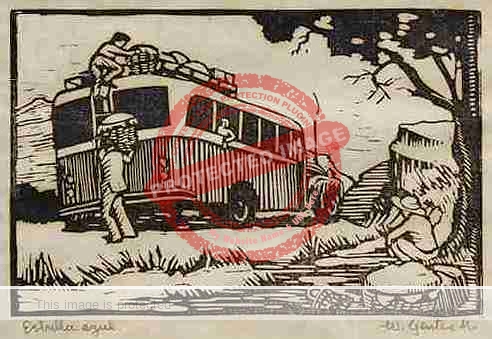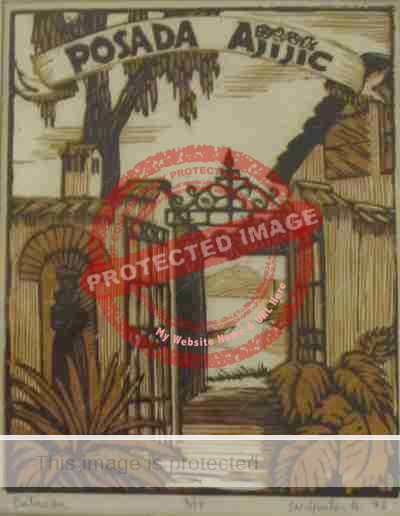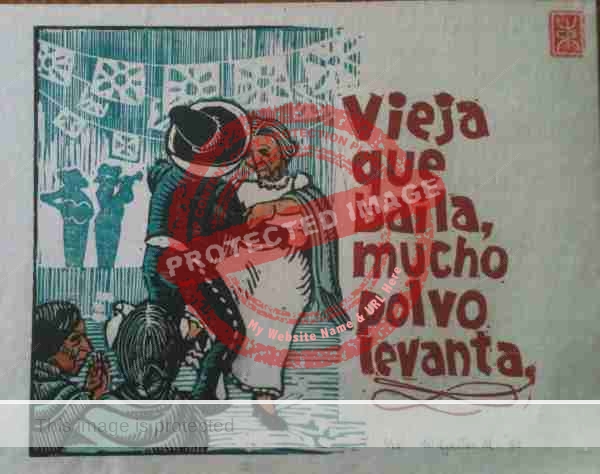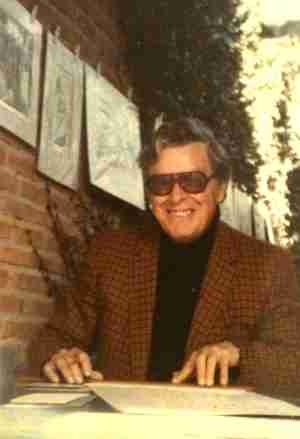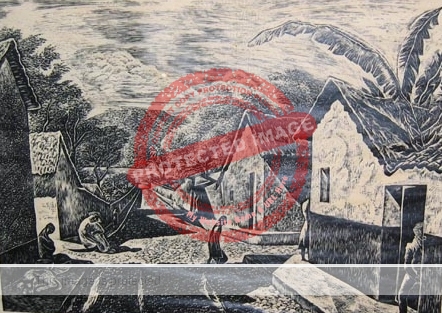Painter, sculptor and print-maker James Steg, who was Professor of Art at Newcomb College, Tulane University, in New Orleans for more than forty years, worked in Ajijic during the summer of 1958.
James Louis Steg (“Jim”) was born in Alexandria, Virginia, in 1922 and died in New Orleans in 2001. He gained his M.A. degree in Fine Arts degree from the State University of Iowa. He served in the U.S. Army during the second world war and was in a camouflage unit during the D-Day landings.
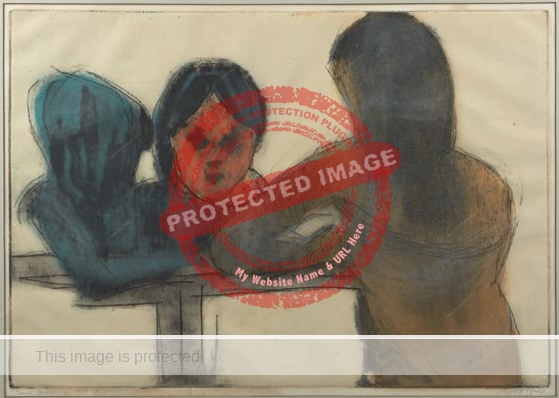
James Steg. “The Picnic Scene”. Etching and aquatint. Undated.
James Steg was art professor at Newcomb College for 43 years. Among his students in an etching class was Frances Swigart, who later became his wife.
Throughout his career, Steg was constantly exploring new printmaking techniques and he developed many innovative methods such as altering Xeerox prints with paint and chemicals. According to Doug MacCash, art critic for The Times-Picayune, age did nothing to diminish Steg’s boundless creativity or artistic output.
Steg spent the summer of 1958 in Ajijic, as evidenced by this brief entry in The Times-Picayune drawing readers’ attention to the opening of his latest art show in New Orleans:
“James Steg recently sold an etching “Bird of Prey” to the New York Public Library collection. This is the 23rd public institution to have purchased one of the artist’s works. Steg is back at the Newcomb art school after a summer stay in Ajijic.”
By lucky coincidence, one of his rare works from this time came up for auction in 2015. The etching, a studio print from the estate of artist and educator George C. Wolfe of New Orleans, is titled “The Goat Herder (Mexico)”.
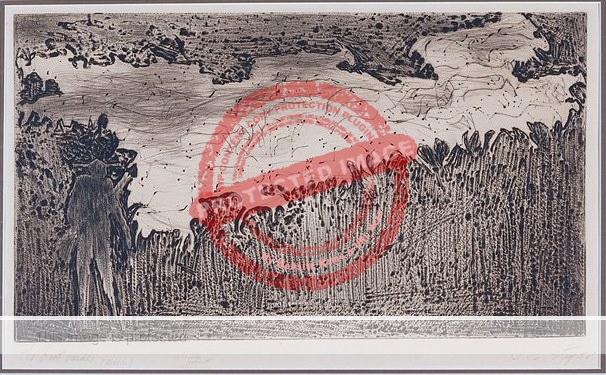
James Steg. “The Goat Herder (Mexico)”. Etching. 1958.
In addition to participating in dozens of group shows, Steg held many solo exhibitions. In New Orleans, these included shows at the IH Gallery at International House, the H. Sophie Newcomb College of Tulane University, World’s Fair Expo ’84, and at Marguerite Oestreicher Fine Arts Gallery. He also had one-person shows in New York (the Weyhe Gallery; Associated American Artists), Philadelphia (Philadelphia Art Alliance), Dalls (Dallas Museum of Art; Cushing Gallery), Columbus (Ohio State University), Coral Gables (University of South Florida) and Oxford (University of Mississippi). His only recorded international solo show was at the USIA Exhibition in Ankara, Turkey.
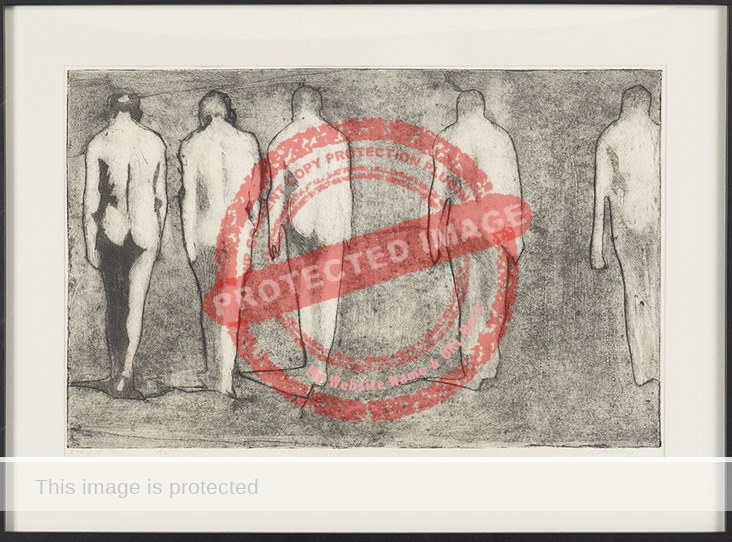
James Steg. “The work of five men”. Etching. Undated.
A retrospective exhibition of his work, entitled “Thirty Years of J. L. Steg: 1948-78”, was held at the New Orleans Museum of Art in 1978.
Among the many awards he received for his art were the Charles Lea Prize from Philadelphia Print Club, and an award from Lugano, Switzerland. Steg was named a Printmaker Emeritus by the Southern Graphic Arts Council.Steg’s works can be found in the permanent collections of numerous venerable institutions, including the Museum of Modern Art in New York, the Library of Congress, the Smithsonian Institution, the Philadelphia Museum of Art, the New York Public Library, the New Orleans Museum of Art, Brooklyn Museum in New York, Dallas Museum of Art. Minnesota Museum of American Art and the Seattle Museum, as well as in 30 university collections and many private collections in the New Orleans area. Overseas, pieces by Steg are in the Museum of Modem Art in Sao Paulo, Brazil and in the Bezalel National Museum in Jerusalem.
Sources:
- Website about James Steg: collections / prints & paintings / sculptures [http://swigart-steg.com/; 17 Jul 2017]
- Times-Picayune. 1958. “Art Show Opens this Week”, Times-Picayune (New Orleans), 14 September 1958, p 29.
Sombrero Books welcomes comments, corrections or additional material related to any of the writers and artists featured in our series of mini-bios. Please use the comments feature at the bottom of individual posts, or email us.
